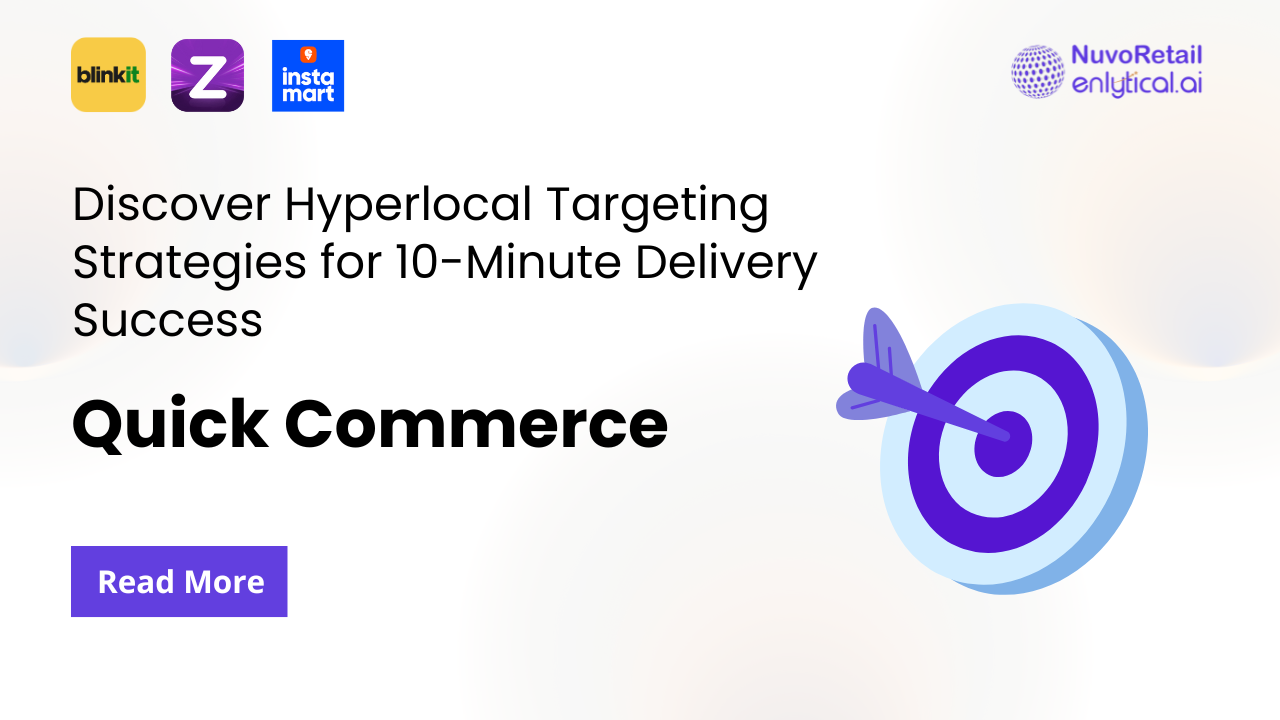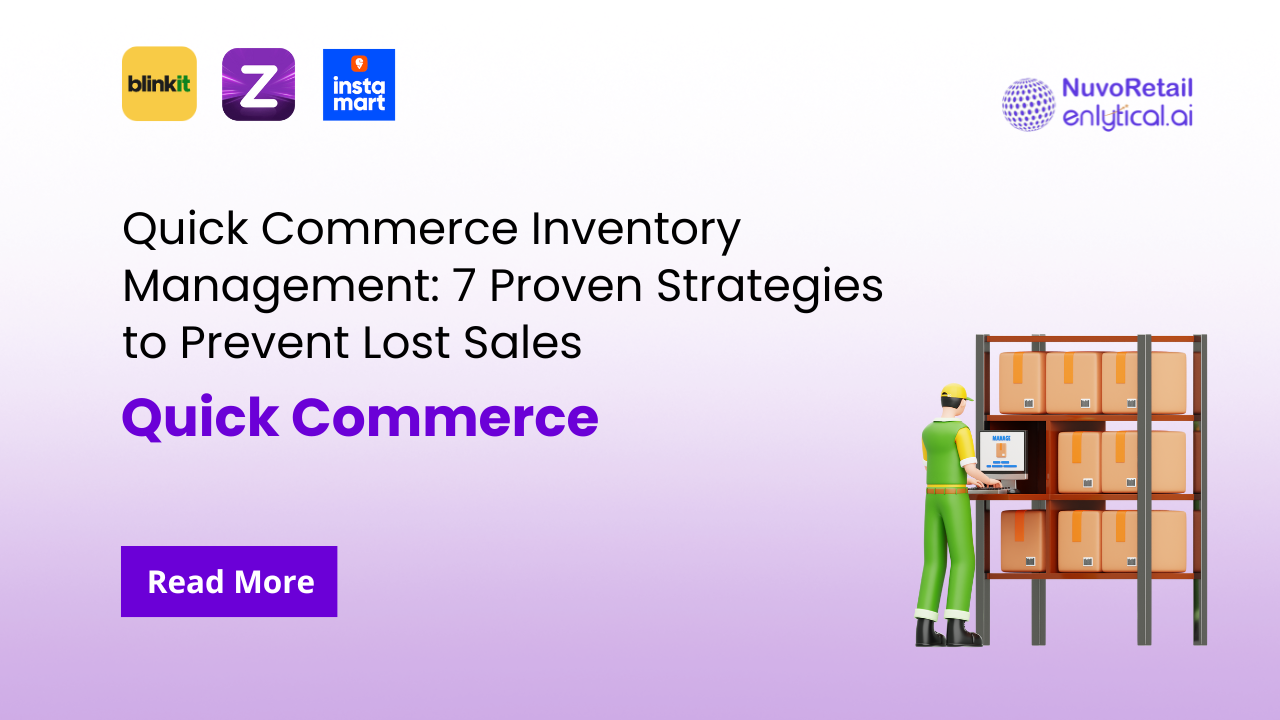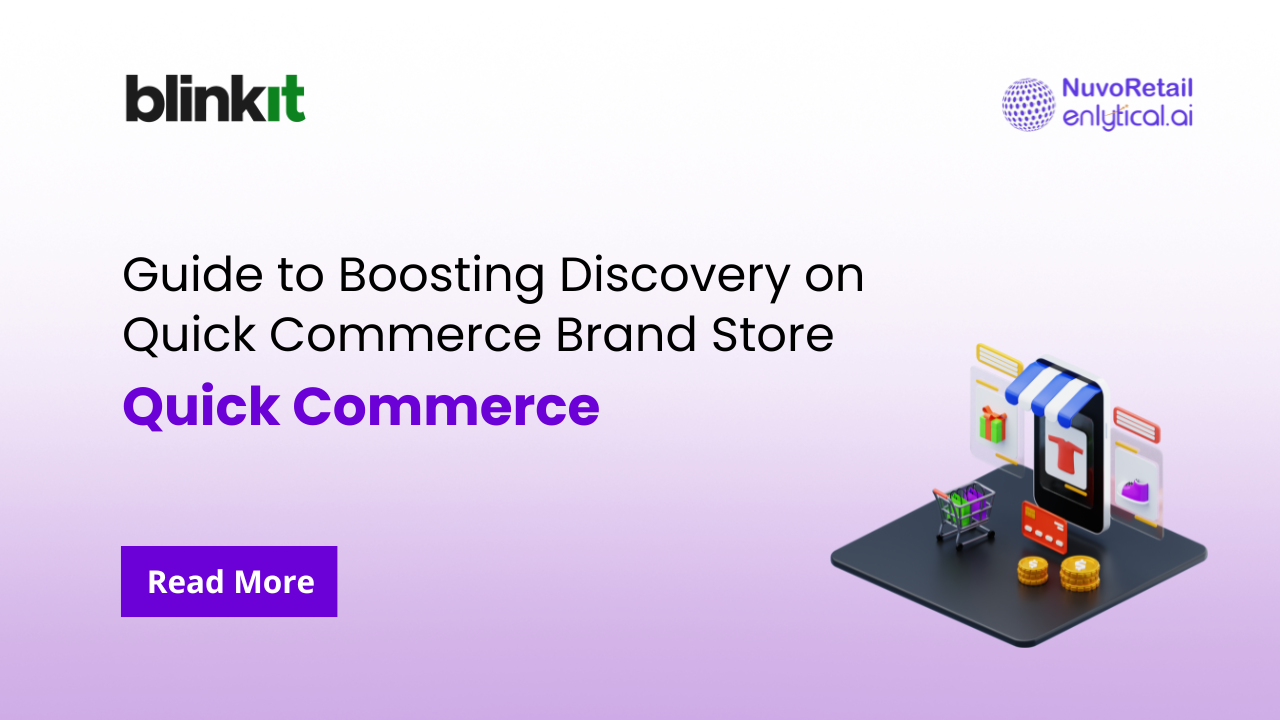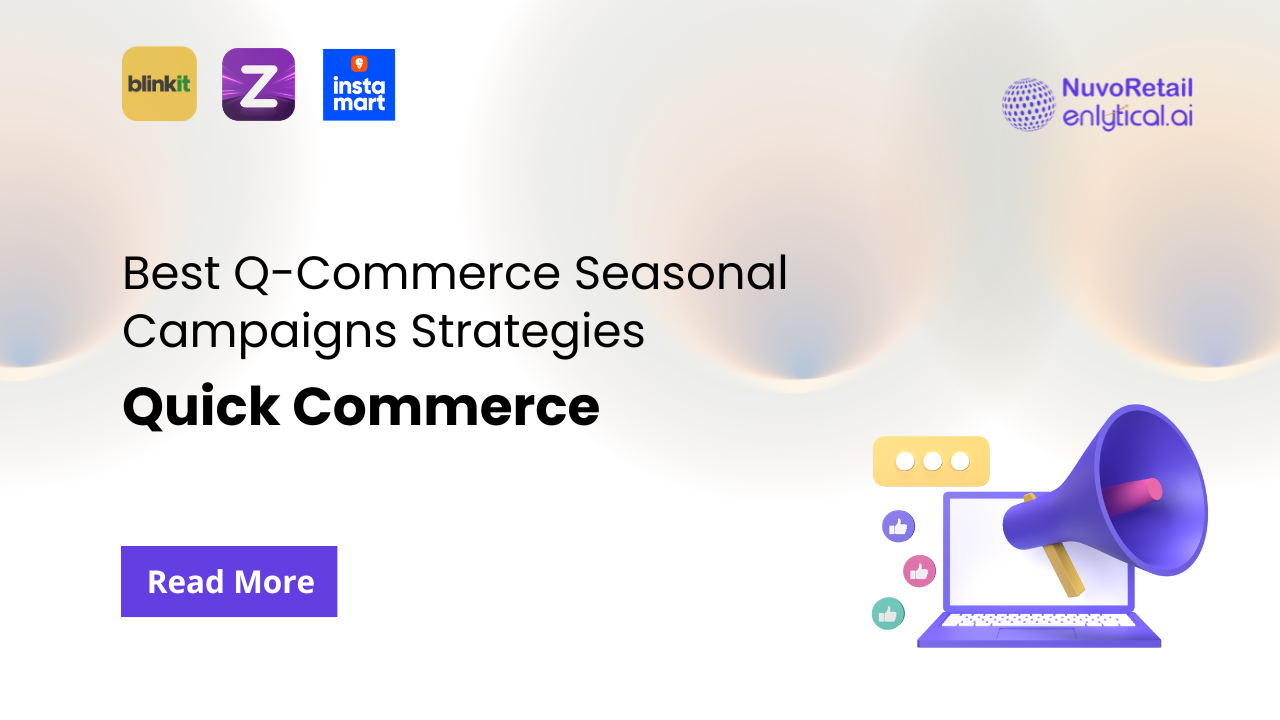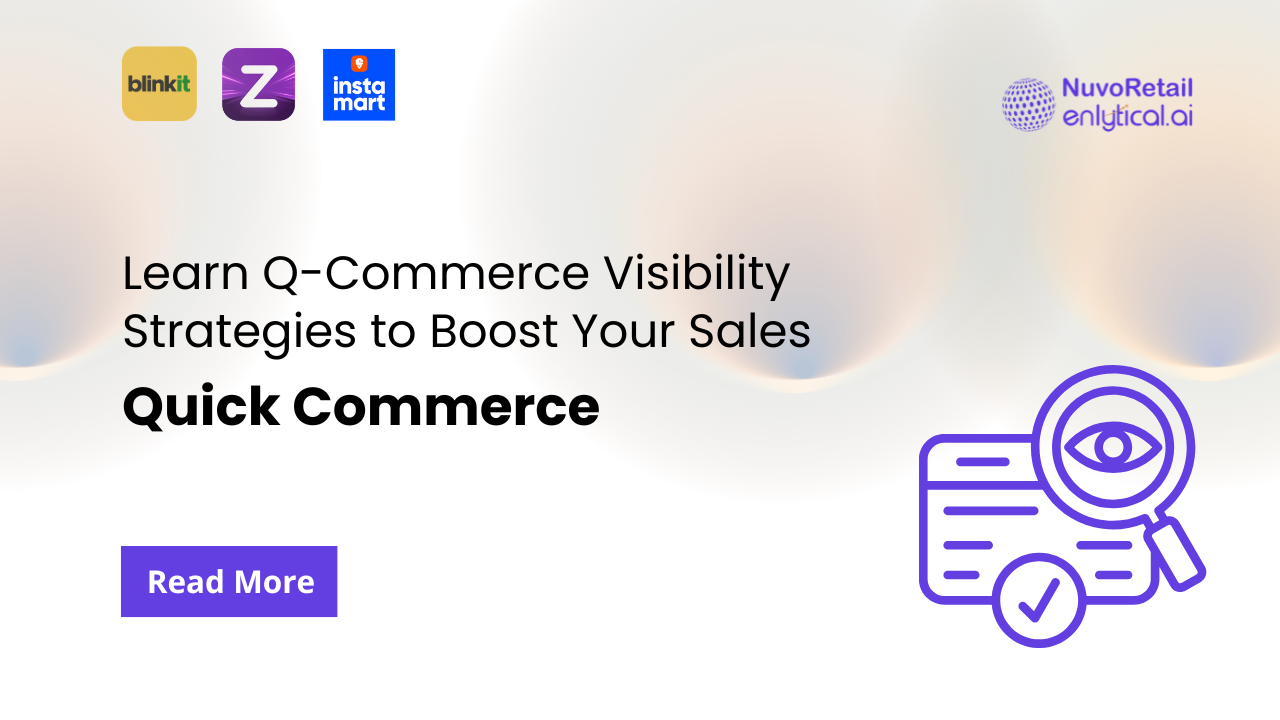Hyperlocal targeting has revolutionized how quick commerce companies connect with customers within their immediate delivery radius. As consumer expectations shift toward instant gratification, businesses must master precision marketing to thrive in the competitive landscape of 10-minute deliveries.
The rise of platforms like Blinkit, Zepto, and Swiggy Instamart demonstrates the power of strategic location-based marketing. These rapid delivery services have cracked the code on reaching the right customers at the right time within their service zones.
Agencies like NuvoRetail, with expertise in quick commerce marketing, help brands replicate these proven hyperlocal strategies to achieve measurable growth.
In this comprehensive guide, we’ll explore proven strategies that help businesses maximize their hyperlocal targeting efforts and build sustainable quick commerce operations.
Table of Contents
- Understanding Hyperlocal Targeting in Quick Commerce
- Geographic Segmentation for Delivery Zones
- Behavioral Targeting Within Your Radius
- Platform-Specific Targeting Strategies
- Real-Time Location-Based Advertising
- Customer Journey Mapping for Rapid Delivery
- Performance Measurement and Optimization
Understanding Hyperlocal Targeting in Quick Commerce
Hyperlocal targeting represents the foundation of successful quick commerce marketing. Unlike traditional e-commerce, the q commerce model operates within strict geographical boundaries, typically serving customers within a 2-3 kilometer radius.
Quick commerce platforms like Blinkit, Zepto, and others have perfected this approach by focusing on micro-markets. They understand that a customer’s location directly impacts their purchasing behavior, delivery expectations, and brand loyalty.
The key lies in recognizing that hyperlocal targeting isn’t just about geography—it’s about understanding the unique characteristics of each neighborhood. Demographics, purchasing power, lifestyle patterns, and even local events influence how customers interact with rapid delivery services.
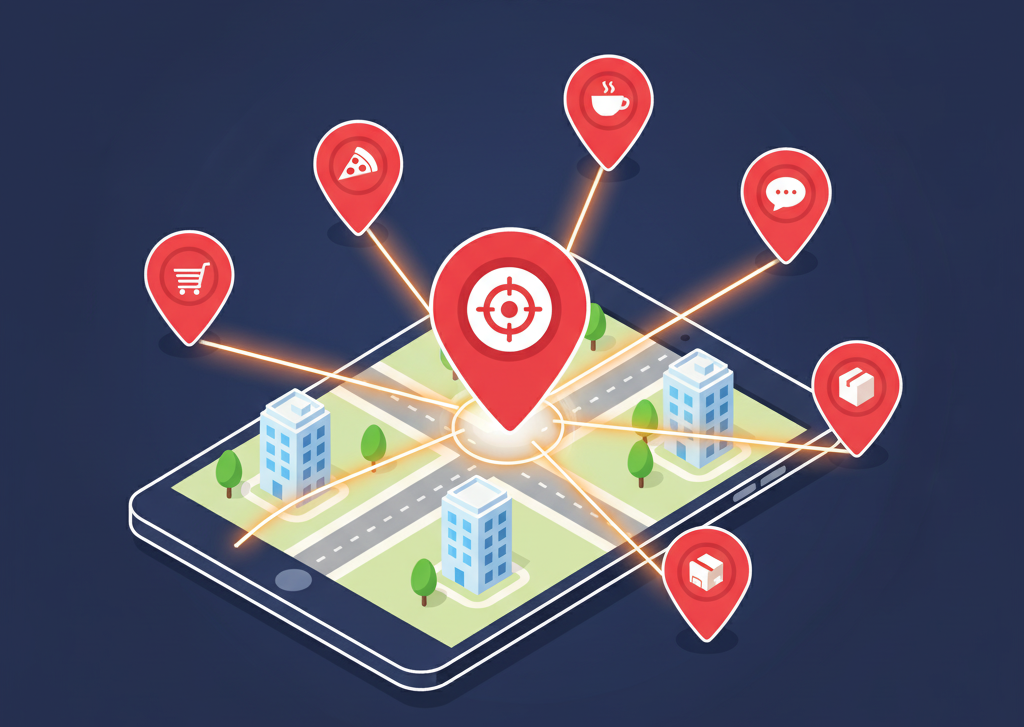
Why Hyperlocal Matters for Quick Commerce Inventory
For effective quick commerce inventory management, hyperlocal targeting plays a critical role in aligning supply with demand. By analyzing purchasing trends across different delivery zones, businesses can ensure that the right products are consistently stocked where they’re needed most. This precision prevents costly stockouts in high-demand neighborhoods, while also reducing excess inventory in slower-moving areas. The result is faster fulfillment, higher customer satisfaction, and more efficient use of storage space. To dive deeper into preventing stockouts during peak demand, check out our detailed guide on quick commerce inventory strategies.
Geographic Segmentation for Delivery Zones
Effective geographic segmentation starts with dividing your delivery area into distinct zones based on multiple factors. Quick commerce companies must analyze population density, average order values, and delivery frequency to optimize their hyperlocal targeting strategy.
Create micro-segments within your delivery radius by examining:
- Residential vs. commercial areas
- Income levels and spending patterns
- Age demographics and lifestyle preferences
- Peak ordering hours by location
Quick commerce success stems from their granular approach to geographic segmentation. They treat each delivery zone as a unique market, adjusting inventory, pricing, and marketing messages accordingly. A densely populated residential neighborhood may require higher stock of essentials like groceries and personal care items, while business districts might demand ready-to-eat meals, beverages, and office supplies during working hours.
For businesses entering the quick commerce space, start by identifying your highest-value delivery zones. Focus your hyperlocal targeting efforts on areas with strong demand signals and optimal delivery logistics. This ensures not only better campaign performance but also improved customer satisfaction through reduced delivery times and better product availability.
Partnering with specialists like NuvoRetail can help businesses refine delivery zone segmentation and design campaigns tailored to local consumer behavior. With NuvoRetail’s expertise in quick commerce marketing, brands can unlock actionable insights, align inventory with hyperlocal demand, and execute campaigns that maximize ROI while eliminating wasted ad spend in low-potential areas.
Behavioral Targeting Within Your Radius
Behavioral targeting transforms location data into actionable customer insights. Quick commerce platforms excel by combining geographic proximity with purchase history, browsing patterns, and seasonal trends to predict demand more accurately and enhance customer engagement.
Understanding customer behavior within your delivery radius enables precise campaign optimization. By tracking patterns such as:
- Average order frequency per neighborhood
- Product preferences by location
- Time-sensitive purchasing patterns
- Response rates to location-specific offers
Businesses can tailor their marketing to deliver the right message at the right time. For example, one neighborhood might show a higher demand for packaged snacks and beverages late at night, while another may consistently order essentials like milk and bread early in the morning. Identifying and acting on these insights is what separates successful quick commerce companies from average ones.
Instamart leverages behavioral data to predict demand surges in specific areas. Their hyperlocal targeting algorithms identify customers likely to place orders during peak hours, enabling proactive inventory management and ensuring popular products remain in stock during demand spikes.
NuvoRetail’s quick commerce services leverage behavioral insights to optimize campaigns, ensuring customers receive highly relevant offers in real time. This ensures shoppers receive the most relevant deals when they’re most likely to convert, driving both immediate sales and long-term loyalty.
Platform-Specific Targeting Strategies
Different advertising platforms offer unique advantages for hyperlocal targeting in quick commerce marketing. Social media platforms provide granular location targeting, while search engines capture high-intent local queries, giving businesses multiple avenues to connect with potential customers.
Facebook and Instagram excel at building brand awareness within delivery zones. Their precise location-based targeting allows quick commerce companies to deliver relevant creative content, promotional offers, and even festival-specific campaigns to customers in their immediate vicinity. For instance, brands can run “limited-time Diwali grocery bundles” targeted specifically to neighborhoods with high festival shopping activity.
Google Ads, on the other hand, captures customers with stronger intent who are actively searching for rapid delivery services in their area. By combining location extensions with local inventory ads, businesses can ensure their products show up exactly when customers need them most—whether it’s groceries, medicines, or last-minute essentials.
According to 6 proven quick commerce advertising strategies, successful campaigns integrate multiple platforms while maintaining consistent messaging across touchpoints.
Real-Time Location-Based Advertising
Real-time advertising represents the cutting edge of hyperlocal targeting for rapid delivery services. This approach enables dynamic campaign adjustments based on current conditions like weather, traffic, local events, and even fluctuating inventory levels. By adapting campaigns in the moment, businesses can ensure they’re always meeting customer demand when it matters most.
Quick commerce platforms utilize real-time data to trigger location-specific campaigns. For example, when inventory levels drop in certain areas, automated systems can redirect advertising spend to zones with better stock availability, preventing wasted ad spend and improving conversion rates. This helps maximize return on investment while ensuring customers in high-stock regions continue to see relevant promotions.
Weather-triggered campaigns are another powerful demonstration of real-time hyperlocal targeting. Rainy days often lead to spikes in demand for essentials like groceries, hot beverages, or medicines, while sunny days drive higher sales of chilled drinks, snacks, and ice creams. Similarly, local events such as sports matches or festivals can trigger immediate shifts in product demand, creating opportunities for targeted promotional campaigns.
The rise of hyperlocal quick commerce highlights how real-time optimization separates successful platforms from competitors. Companies that fail to adapt their campaigns in real time often lose out on demand surges, while those that capitalize on them build stronger brand loyalty and achieve higher order volumes.
Customer Journey Mapping for Rapid Delivery
Customer journey mapping reveals the critical touchpoints where hyperlocal targeting creates maximum impact. Unlike traditional e-commerce journeys that span multiple days or even weeks, the quick commerce journey unfolds within minutes, making precision marketing essential at every stage. Quick commerce companies must understand how location influences customer decisions and expectations across the funnel.
The awareness stage benefits from location-based social media campaigns, neighborhood-specific promotions, and collaborations with local influencers who hold strong credibility in their communities. These hyperlocal tactics help build trust and recognition within delivery zones.
At the consideration stage, customers respond strongly to geo-targeted search ads, location-specific reviews, and nearby product availability. When customers know a platform can deliver exactly what they need, within their neighborhood, in under 10 minutes, conversion likelihood skyrockets.
During the purchase phase, hyperlocal targeting ensures customers see accurate delivery times, dynamic pricing offers, and real-time inventory availability. Nothing erodes trust faster than advertising a product that isn’t in stock locally—precise targeting avoids this pitfall by syncing campaigns with inventory at the zone level.
Finally, in the post-purchase engagement stage, location data plays a key role in predicting future needs and reordering patterns. For example, customers who frequently order snacks during cricket matches in a specific area can be proactively targeted before the next big game. Personalized, hyperlocal retention campaigns like these drive loyalty and repeat purchases.
Performance Measurement and Optimization
Measuring hyperlocal targeting success requires location-specific metrics that go beyond traditional e-commerce KPIs. In quick commerce, where delivery happens in 10 minutes or less, precision in measurement directly impacts both profitability and customer experience. Traditional marketing KPIs such as impressions and click-through rates need to be adjusted to reflect the unique dynamics of rapid delivery services, where local context, inventory availability, and delivery efficiency matter just as much as ad engagement.
Key performance indicators for hyperlocal targeting include:
- Delivery Zone Penetration Rates
- Order Frequency by Geographic Segment
- Customer Acquisition Cost (CAC) per Area
- Lifetime Value (LTV) by Location
- Delivery Success Rates by Zone
Quick commerce leaders like Zepto and Blinkit continuously optimize their hyperlocal targeting strategies by closely monitoring these KPIs. For example, if a neighborhood shows low penetration but high LTV potential, they adjust campaigns and promotions to increase adoption rates in that area. Similarly, delivery success rates are tied directly to customer satisfaction—zones with frequent delays often require operational and marketing realignment.
The winning formula in quick commerce lies in rapid testing, real-time adjustments, and data-driven decision-making. Companies that excel at optimization don’t just measure performance—they act on insights quickly to stay ahead of customer expectations.
Conclusion
Hyperlocal targeting serves as the backbone of successful 10-minute delivery operations, ensuring that quick commerce companies can meet rising consumer expectations while maintaining profitability. By implementing these seven proven strategies, businesses can build stronger connections with customers within their delivery radius while simultaneously optimizing inventory, logistics, and operational efficiency.
The future belongs to businesses that master the art of precision marketing at the neighborhood level. As the quick commerce model continues to evolve, hyperlocal targeting will no longer be limited to simple geographic segmentation—it will become increasingly sophisticated, powered by AI-driven predictive analytics, machine learning algorithms, and IoT-enabled inventory management systems. These technologies will allow businesses to anticipate customer needs, personalize offers in real-time, and ensure stock availability in every micro-market they serve.
Success in rapid delivery services demands more than just operational speed. It requires a deep understanding of local markets, the ability to translate customer data into actionable insights, and a culture of continuous optimization and customer-centric innovation. Brands that treat every neighborhood as a distinct market—tailoring campaigns, offers, and inventory to its unique dynamics—will consistently outperform competitors who rely on one-size-fits-all approaches.
NuvoRetail empowers quick commerce companies to achieve this level of precision. With expertise in hyperlocal targeting, real-time campaign optimization, and data-driven marketing solutions, NuvoRetail helps businesses transform their delivery operations into scalable growth engines. Whether you’re launching a new rapid delivery service or optimizing an existing one, NuvoRetail’s quick commerce marketing services ensure you stay ahead in an increasingly competitive landscape.
Supercharge Your Quick Commerce Growth with Hyperlocal Targeting
Implementing these hyperlocal targeting strategies can help you unlock new levels of efficiency and customer satisfaction in your delivery business. But winning in the 10-minute delivery economy requires more than just strategy it demands expert execution.
At NuvoRetail, we specialize in quick commerce marketing services that help brands dominate platforms like Blinkit, Zepto, and Swiggy Instamart. From hyperlocal audience targeting to performance-driven campaign optimization, our team ensures your brand captures demand exactly where and when it matters most.
Contact us today to learn how we can help you scale your quick commerce business with precision marketing and sustainable growth strategies.
